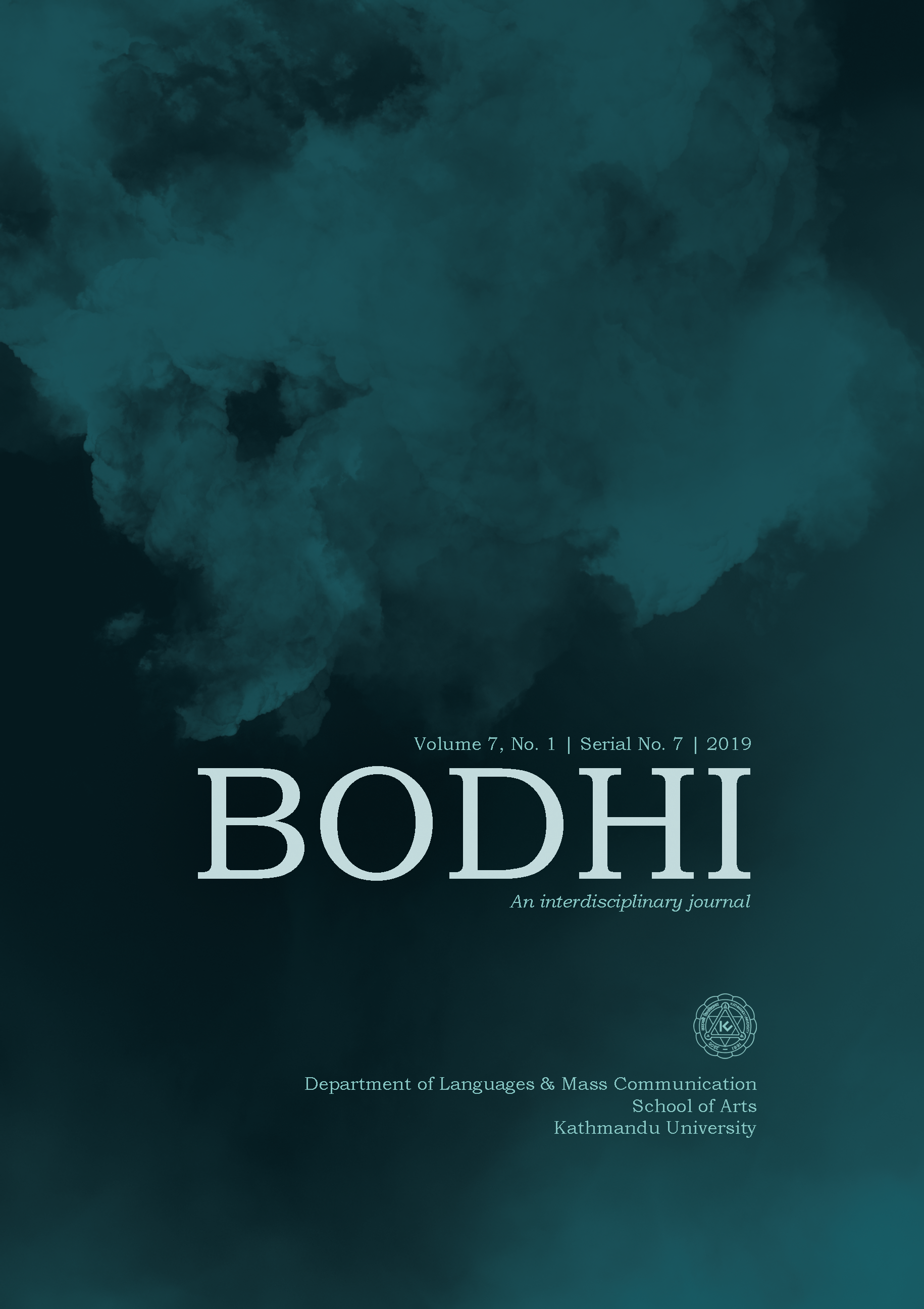The Root of Indian Communication Theory in the Ṛig Veda: Practical Vedānta
DOI:
https://doi.org/10.3126/bodhi.v7i0.27902Keywords:
Vedanta, Indian communication theory, levels of speech, Rig Veda 1.164.39, Vedic rehtoricAbstract
What is the source of the power of speech and eloquence and fulfillment in life? Though communication and rhetoric departments in most Indian universities have been focusing their teaching and research agendas on Western models, a growing body of scholarship is developing communication theory that approaches the big questions from an Indian perspective, drawing on traditional sources (Adhikary, 2014), which claim Veda as their ultimate source. This paper explores the Vedic worldview on speech and communication proclaimed in the Ṛicho Akśare verse of the Ṛig Veda, and others, drawing on sage Bhartṛhari (c. 450-500 CE), Maharishi Mahesh Yogi (1975; 1971), and Sanskrit scholars of the philosophy of language, who reference these hymns. They describe a Vedic cosmology of speech that bears striking resemblance to the universe according to string theory of quantum physics. The science serves to corroborate the premise of Vedic levels-of-speech theory that the universe is structured and governed by laws of nature/language of nature from within an unmanifest unified field of all the laws of nature, which Ṛig Veda 1.164 calls Parā and identifies as consciousness. This inquiry helps to illuminate how speech is Brahman, the source and goal of understanding, eloquence, and fulfillment. The Vedic texts enjoin the sanātana dharma of yoga, opening awareness to the transcendental source of speech. I conclude that Vedic communication theory embedded in the hymns is integral to practical Vedanta. As Muktitkā Upaniṣad 1.9 proclaims: “As oil is present in a sesame seed, so Vedānta is present in the Veda.”
Downloads
Downloads
Published
How to Cite
Issue
Section
License
© Department of Languages and Mass Communication, School of Arts, Kathmandu University, Nepal




